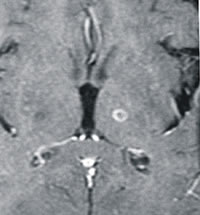- HYGEIA
- Vision & Mission
- Timeline
- Organizational structure
- Press Releases
- Social responsibility
- Awards and Distinctions
- Human Resources
- Scientific & Training activities
- Articles – Publications
- Our Facilities
- Magazines
- Healthcare Programs
- Doctors
- Services
- Medical Divisions & Services
- Imaging Divisions
- Departments
- Units
- Centers of Excellence
- Emergency – Outpatient
- Nursing Service
- Ambulances
- Patients
- Hygeia
- Υπηρεσίες
- Ιατρικά Τμήματα & Υπηρεσίες
Parkinson’s
Intention Tremor in Parkinson’s Disease and other Disorders
Intention tremor is a severe shaking of the arm or leg that appears or increases when the patient tries to perform a movement. Such tremor is due to brain damage, usually from Parkinson’s disease, multiple sclerosis or head injury. For over 40 years the most effective treatment, especially when only one side is affected, has been the creation of a small lesion in the thalamus of the brain. In the past this has been performed by electrocoagulation using a probe or by stimulation using an inserted electrode. These invasive techniques carry the risk of haemorrhage or infection.

Post treatment MRI showing the well-defined small lesion in the vetro-lateral (Vim) nucleus of the thalamus
A similar result can be obtained, reducing or stopping the tremor, using the Gamma Knife to create the thalamic lesion. 88% of such treatments produce a successful result after a few months.Post treatment MRI showing the well-defined small lesion in the vetro-lateral (Vim) nucleus of the thalamus
There has been renewed interest in surgical intervention to treat Parkinson’s disease. This is due to the realization that many patients become refractory to levodopa after long-term use, combined with the occurrence of dyskinetic movements associated with Sinemet.The classical approach to stereotactic neurosurgery for Parkinson’s disease has been to perform lesions by placing an electrode in the appropriate target and heating it by radiofrequency current. The main complications are intracerebral haemorrhage and neurological damage due to misplaced lesions. The use of stereotactic deep brain stimulation has fewer cerebral complications but more practical problems associated with the implanted electrode and stimulator.The Gamma Knife was originally designed and intended as an instrument for thalamotomy, but only recently have large series with adequate follow up been reported. In a series of 158 gamma thalamotomies for tremor the cure rate was 88% with results maintained at 4 years follow up (1). From the same center the relief of Sinemet induced dyskinesia by pallidotomy was 85% and pallidotomy also improved two thirds of patients with rigidity and bradykinesia. Two patients (1.3%) had a mild lesion induced neurological deficit.The effectiveness of Gamma Knife treatment is the same as a traditional open stereotactic procedure but with much lower complications. The control of dyskinesia is delayed for 6-18 months from treatment.
REFERENCES
- Vouna RF, Jaques S, Mark R et al. Gamma knife thalamotomy for treatment of tremor: long term results. J Neurosurg 2000; 93 (suppl 3): 128-135
- © 2007-2025 HYGEIA S.M.S.A.
- Personal Data Protection Policy
- COOKIES Policy
- Terms of Use
- Privacy Policy
- Credits
- Sitemap
- Made by minoanDesign
Ο ιστότοπoς μας χρησιμοποιεί cookies για να καταστήσει την περιήγηση όσο το δυνατόν πιο λειτουργική και για να συγκεντρώνει στατιστικά στοιχεία σχετικά με τη χρήση της. Αν θέλετε να λάβετε περισσότερες πληροφορίες πατήστε Περισσότερα ή για να αρνηθείτε να παράσχετε τη συγκατάθεσή σας για τα cookies, πατήστε Άρνηση. Συνεχίζοντας την περιήγηση σε αυτόν τον ιστότοπο, αποδέχεστε τα cookies μας.
Αποδοχή όλων Άρνηση όλων ΡυθμίσειςCookies ManagerΡυθμίσεις Cookies
Ο ιστότοπoς μας χρησιμοποιεί cookies για να καταστήσει την περιήγηση όσο το δυνατόν πιο λειτουργική και για να συγκεντρώνει στατιστικά στοιχεία σχετικά με τη χρήση της. Αν θέλετε να λάβετε περισσότερες πληροφορίες πατήστε Περισσότερα ή για να αρνηθείτε να παράσχετε τη συγκατάθεσή σας για τα cookies, πατήστε Άρνηση. Συνεχίζοντας την περιήγηση σε αυτόν τον ιστότοπο, αποδέχεστε τα cookies μας.




































